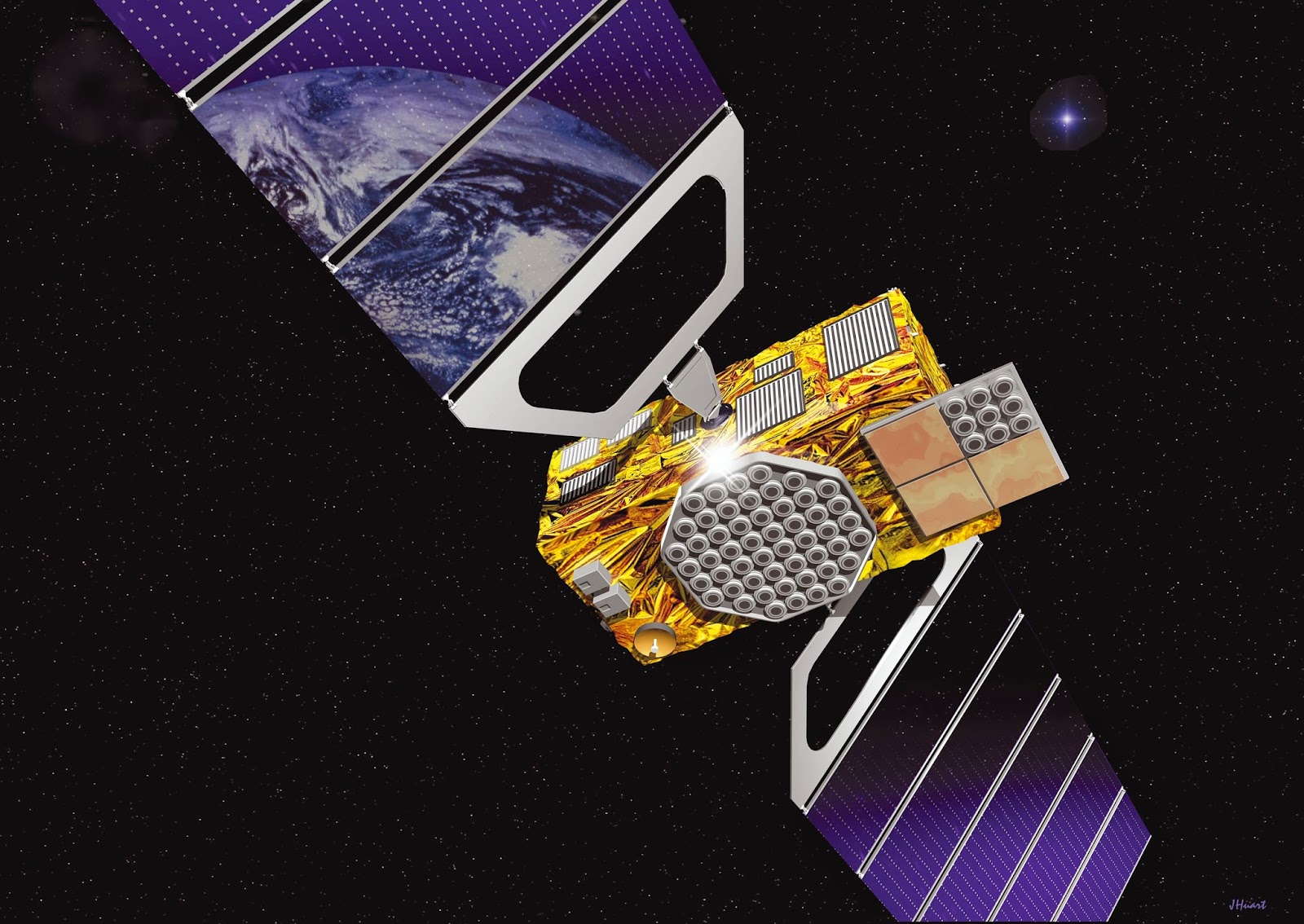Technicians roll out the third Galileo Full Operational Capability (FOC) satellite from its protective container after its arrival in the cleanroom environment of the ESTEC Test Centre in April 2014.
Image courtesy ESA-Anneke Le Floc'h.
Europe's latest Galileo navigation satellite has arrived at the Space Agency's Netherlands-based technical centre for testing, as the previous two satellites are prepared for transport to French Guiana for launch in summer this year.
The new satellite travelled safely enclosed within an air-conditioned and environmentally-controlled protective container from its manufacturer, OHB in Bremen, Germany, to ESA's ESTEC Test Centre in Noordwijk, the Netherlands.
The specially-engineered container was only unsealed once the satellite completed its journey by road to the cleanroom conditions of the Test Centre, Europe's largest site for spacecraft testing, containing a suite of test facilities for space simulations and testing under a single roof.
Meanwhile the previous two Galileo satellites have completed their long test campaign at the Test Centre, and are being finalised for shipping to Europe's Spaceport in French Guiana, for launch together by Soyuz.
Europe's first four Galileo satellites are already in orbit, the minimum number needed for achieving a position fix.
These 'In-Orbit Validation' satellites served to demonstrate the overall Galileo system works as planned, while also serving as the operational nucleus of the full Galileo constellation to follow.
Next comes the 22 'Full Operational Capability'(FOC) satellites being made by OHB in Germany, incorporating navigation payloads produced by Surrey Satellite Technology Ltd in the UK.
The three FOC satellites currently at ESTEC are the first of these 22 to be tested for launch - all of them will pass through the gates of ESTEC within the next few years on their way to space.
Now detailed 'acceptance testing' will be carried out on this latest arrival, to check the satellite workmanship is up to standard.
A fourth FOC satellite is scheduled to arrive at the ESTEC Test Centre in June 2014- the test facilities can accommodate two Galileos at a time.
Such a changeover between FOC satellites arriving as others are being readied to leave for launch will become commonplace in the next few years, as Europe builds up its constellation.
And in future two-satellite Soyuz launches will be supplemented by four-satellite Ariane 5 launches, employing a specially customised version of the launcher.
Image courtesy ESA-Anneke Le Floc'h.
Europe's latest Galileo navigation satellite has arrived at the Space Agency's Netherlands-based technical centre for testing, as the previous two satellites are prepared for transport to French Guiana for launch in summer this year.
The new satellite travelled safely enclosed within an air-conditioned and environmentally-controlled protective container from its manufacturer, OHB in Bremen, Germany, to ESA's ESTEC Test Centre in Noordwijk, the Netherlands.
The specially-engineered container was only unsealed once the satellite completed its journey by road to the cleanroom conditions of the Test Centre, Europe's largest site for spacecraft testing, containing a suite of test facilities for space simulations and testing under a single roof.
Meanwhile the previous two Galileo satellites have completed their long test campaign at the Test Centre, and are being finalised for shipping to Europe's Spaceport in French Guiana, for launch together by Soyuz.
Europe's first four Galileo satellites are already in orbit, the minimum number needed for achieving a position fix.
These 'In-Orbit Validation' satellites served to demonstrate the overall Galileo system works as planned, while also serving as the operational nucleus of the full Galileo constellation to follow.
Next comes the 22 'Full Operational Capability'(FOC) satellites being made by OHB in Germany, incorporating navigation payloads produced by Surrey Satellite Technology Ltd in the UK.
The three FOC satellites currently at ESTEC are the first of these 22 to be tested for launch - all of them will pass through the gates of ESTEC within the next few years on their way to space.
Now detailed 'acceptance testing' will be carried out on this latest arrival, to check the satellite workmanship is up to standard.
A fourth FOC satellite is scheduled to arrive at the ESTEC Test Centre in June 2014- the test facilities can accommodate two Galileos at a time.
Such a changeover between FOC satellites arriving as others are being readied to leave for launch will become commonplace in the next few years, as Europe builds up its constellation.
And in future two-satellite Soyuz launches will be supplemented by four-satellite Ariane 5 launches, employing a specially customised version of the launcher.








No comments:
Post a Comment